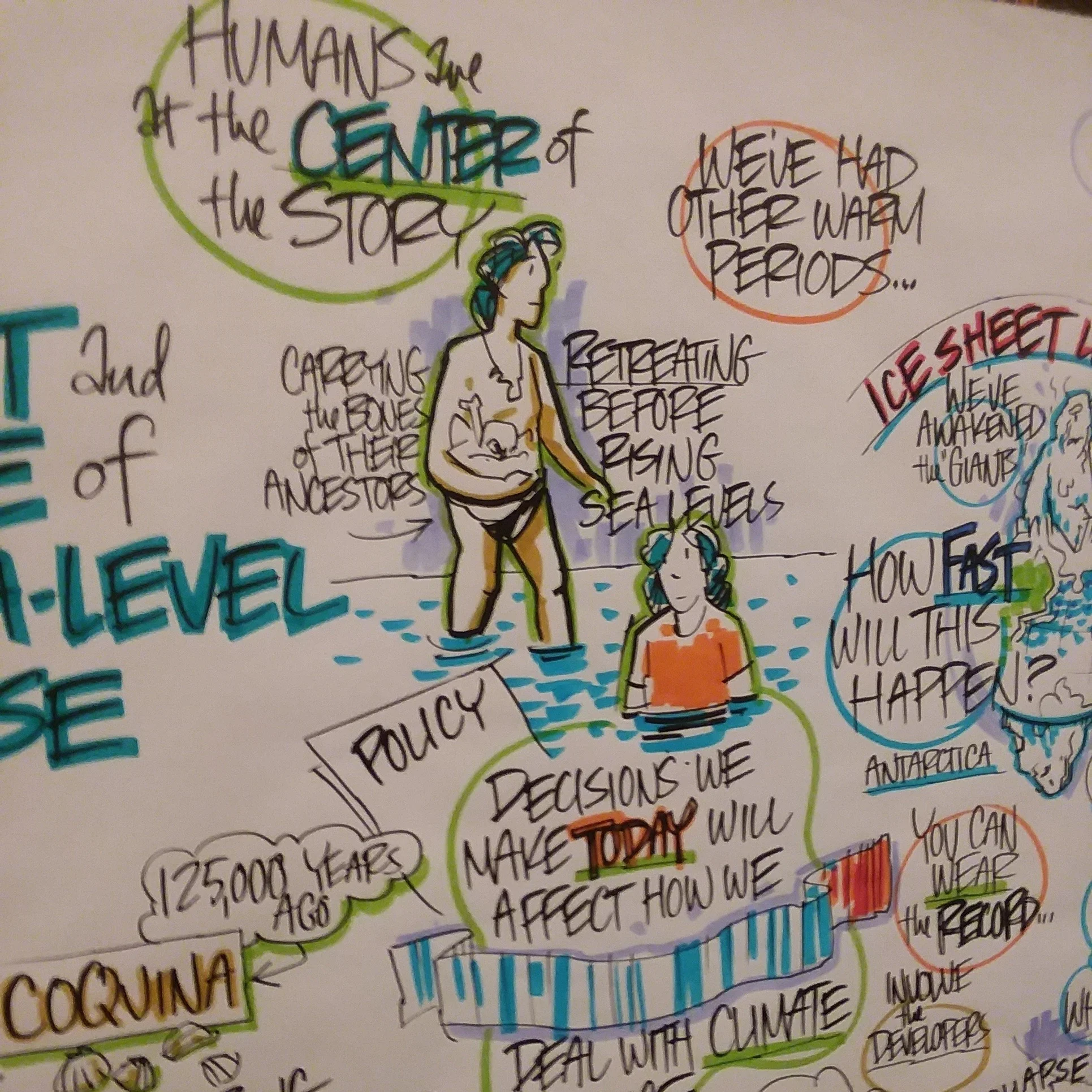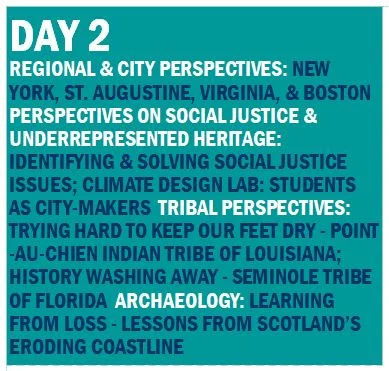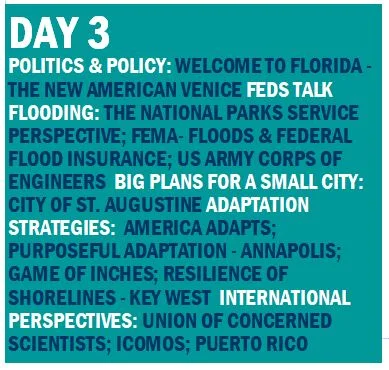Images by Graphic Illustrator Jim Nuttle
How are Communities saving their Historic Neighborhoods and Landmarks from rising waters?
by Julie Ann Larry
Last week was both inspiring and depressing. I attended a terrific conference that brought together climate scientists, geologists, preservation professionals, government officials, and activists to discuss the threat of rising sea levels to historic buildings and sites around the world.
The conference kicked off during a violent thunderstorm that flooded city streets and gave attendees just a taste of the flooding that the beautiful old city of St. Augustine has been experiencing with greater frequency. I forded the flooded streets on Day One to hear journalist and author Jeff Goodell speak about his recent two month voyage to southwest Antarctica’s Thwaites glacier. It was well worth my wet feet! Mr. Goodell is a captivating story teller. He is a contributing editor at Rolling Stone magazine and wrote about his Antarctic journey in a recent feature. It’s worth a read.
Over the next three days I learned more than I ever knew possible about how water behaves from geologists and storm water professionals. I listened to national security professionals describe the challenges of tackling this issue in today’s political climate and the current impact of sea level rise on our military bases. And I heard heartbreaking stories from community activists, like Elder Theresa Dardar of the Point-au-Chien Tribe in Louisiana, whose communities are rapidly changing due to rising sea levels and the human interventions that have exacerbated those impacts.
Honestly, I left the conference overwhelmed. Where can we begin and how can we make an impact? The general consensus of the scientists was that even if we did everything we can to lesson our impact on the warming of our planet today, we’ll still be feeling the impact of the past decades for decades to come. Maine, like many communities, is behind in planning for a changing climate. So what can we do? The first step is understanding what are the current conditions of properties that may be at risk and documenting those risks, whether it is utility connections or basement openings below flood level, loose materials that might be ripped off in high winds, or shady trees that can help cool homes in our increasingly hotter summers.
So this summer Greater Portland Landmarks is conducting the first survey of historic resources at risk from the impacts of climate change in the state. We have four summer interns that will undertake the survey. They have been generously funded in part by a grant administered by the National Park Service, Department of the Interior and matching funds from several Landmarks members. We hope next year to continue the the work by developing educational materials that we can share with homeowners and others interested in what they can do in their communities to prepare for the coming changes. Unfortunately some of that planning will be making tough decisions about what we cannot save.
In the meantime we’ll continue to advocate for fewer demolitions and more reuse of older buildings in greater Portland. Why? Because when it comes to the environmental impacts of building construction, reuse is almost always preferable to new construction. In particular, renovated buildings with fewer new materials have the potential to realize the greatest short-term carbon savings. Since most climate scientists agree that immediate-term action is crucial to staving off the worst impacts of climate change, reducing construction waste and recycling our existing buildings will help our community reduce our carbon footprint.
Conserving our historic resources isn’t going to solve our climate problems, but it can and should be part of the solution.










